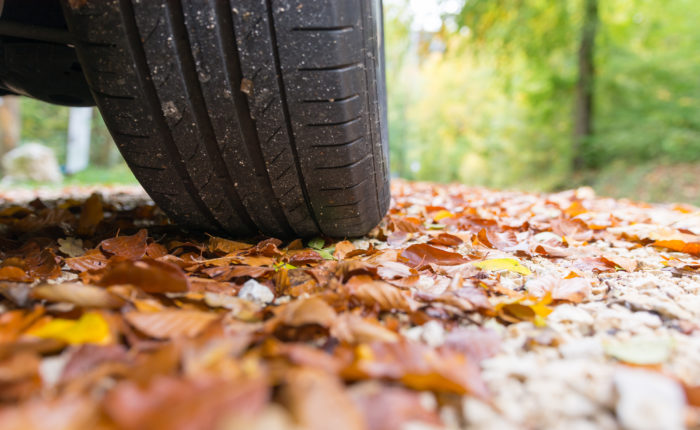Wet Leaves: Silent Killers
November 8, 2019


Fall driving is dangerous enough with cold temperatures, rainstorms, and snow days, making the roads difficult to navigate. But have you ever thought of wet leaves as a road hazard? Most of us don’t realize that leaves can pose a threat to our regular driving routine, but we see numerous vehicles come to our Newtown, PA shop for auto repairs because of accidents due to this very reason. If you’re driving on a road littered with wet leaves, we urge you to be cautious and treat it as if you were driving on black ice. That’s the only way to ultimately ensure the safety of yourself and your passengers.
Is it More Dangerous than Black Ice?
Many sources claim that wet leaves are more dangerous than black ice. While we wouldn’t go that far in describing the risk they pose to drivers, we do agree that wet leaves make for dangerous driving conditions. You may be wondering, what makes wet leaves so hazardous?
Leaves don’t actually absorb water as they are covered in wax-like strands called trichomes, which provide a waterproof barrier. Therefore, rainwater is not absorbed by leaves, but rather sits on top. If you’re driving on a road covered in wet leaves, you’re essentially driving on a wet, slick road. If temperatures are low enough, the wet leaves can ice over and transform the road conditions to be more dangerous.
In addition, wet leaves can stick together and cover road markings and hazards. Drivers should exercise extreme caution when driving on roads that are covered in wet leaves, particularly winding roads and high-speed areas.
Tips for Driving on Wet Roads
- Slow Down: Tires lose traction on wet roads and become difficult to control, especially if you’re traveling at high speeds.
- Increase Your Following Distance: If you’re following closely to the car in front of you, you’ll have less time to react to their actions. By increasing your following distance, you may avoid ending up at our collision center in Bucks County, PA, and Frenchtown, NJ.
- Check Tires: If the tread of your tires has been reduced to nothing, your car isn’t safe to drive, whether on wet or dry roads. Balding tires allow the drivers less control of their vehicle and are more likely to hydroplane.
- Turn on Your Headlights: Headlights will help improve your visibility, so you know the conditions of the road you’re driving on.
- Don’t Slam on Your Breaks: Slamming on your brakes can cause the car to slip and slide on the road. Instead, start breaking early and gently.
- Avoid Cruise Control: Cruise control decreases driver attentiveness and can lead to dangerous collisions.
If you’re involved in an accident due to road hazards, like wet leaves, make sure to first and foremost take into account the safety of yourselves and your passengers. Then immediately call the local authorities and your insurance company to report a claim.
However, most vehicle owners don’t realize that they have the right to choose their own automotive repair service instead of going to the repair facility recommended by their insurance company. Make sure to choose Rob’s Automotive as your preferred collision repair shop to get high-quality services provided to you by our professional technicians. We are certified by 14 major manufacturers, meaning your car services will be held to the highest standards. So when you choose Rob’s to repair your vehicle, it will be returned to you in its pre-accident condition.
Wet leaves are an unexpected road hazard for a lot of people. Make sure you stay safe by following our driving tips. And finally, contact a representative at Rob’s Automotive & Collision to handle your claim from start to finish on your behalf!
